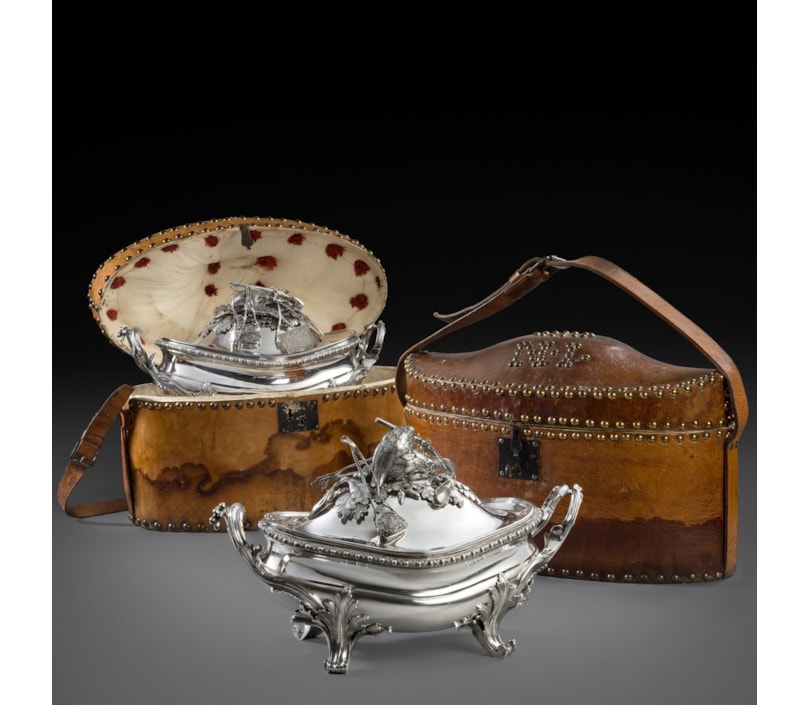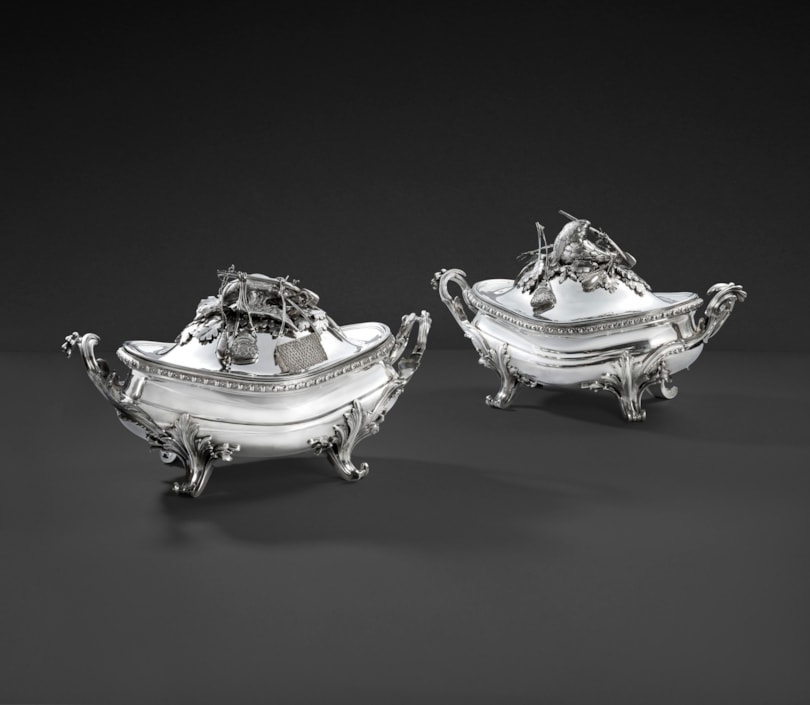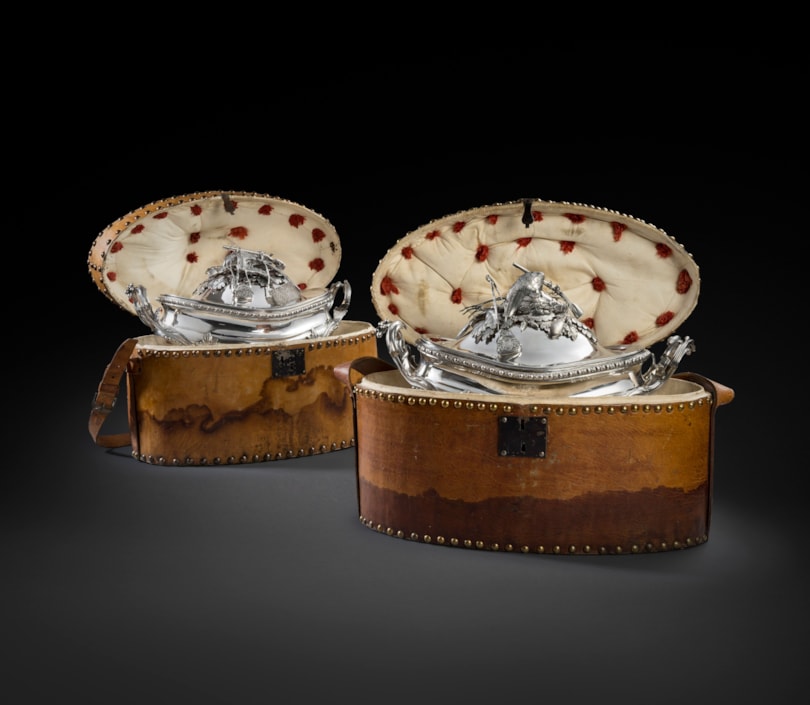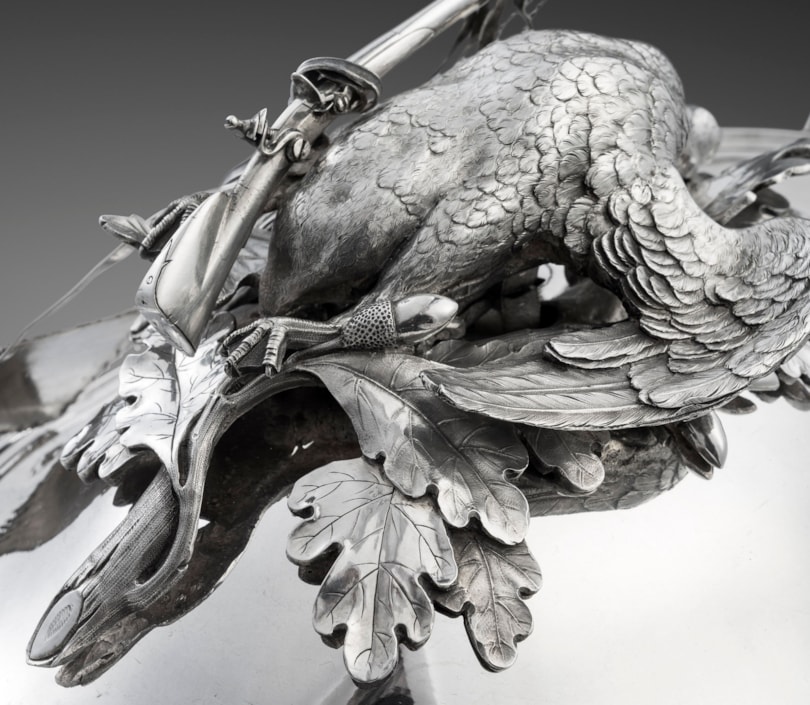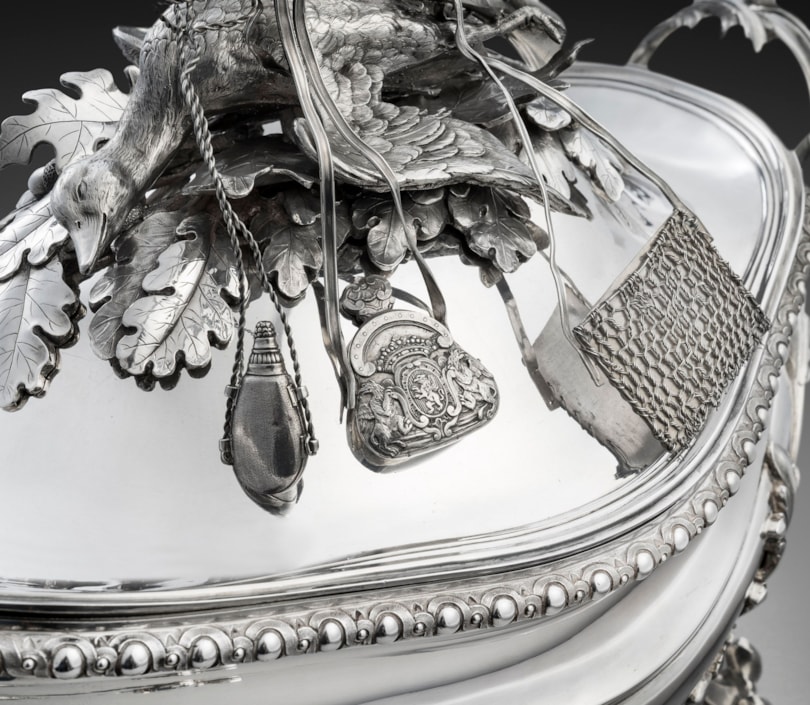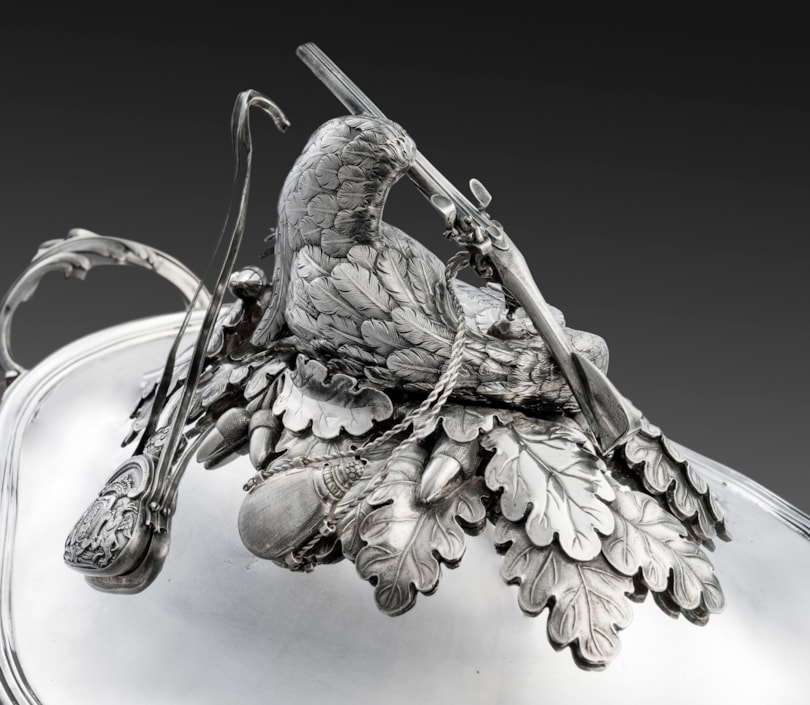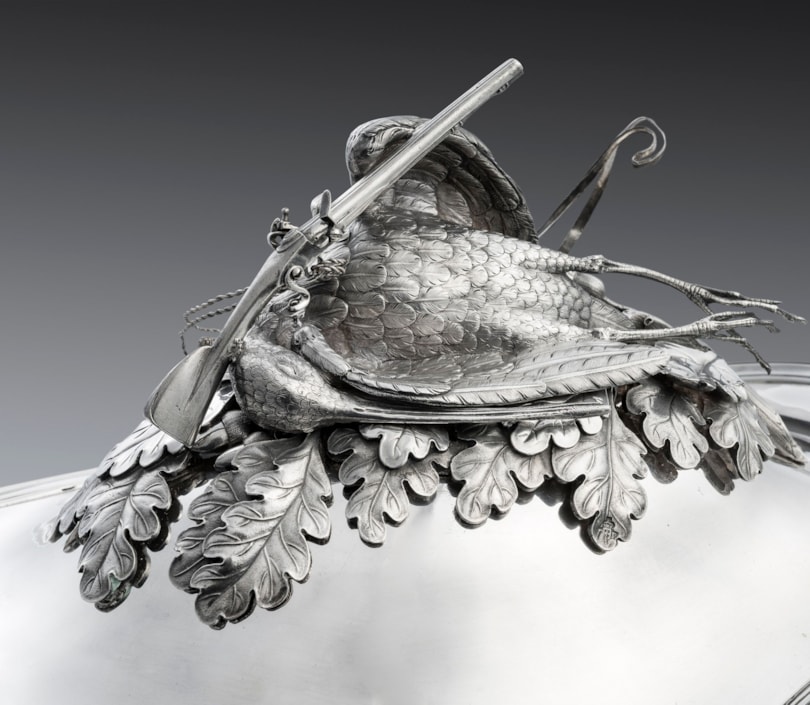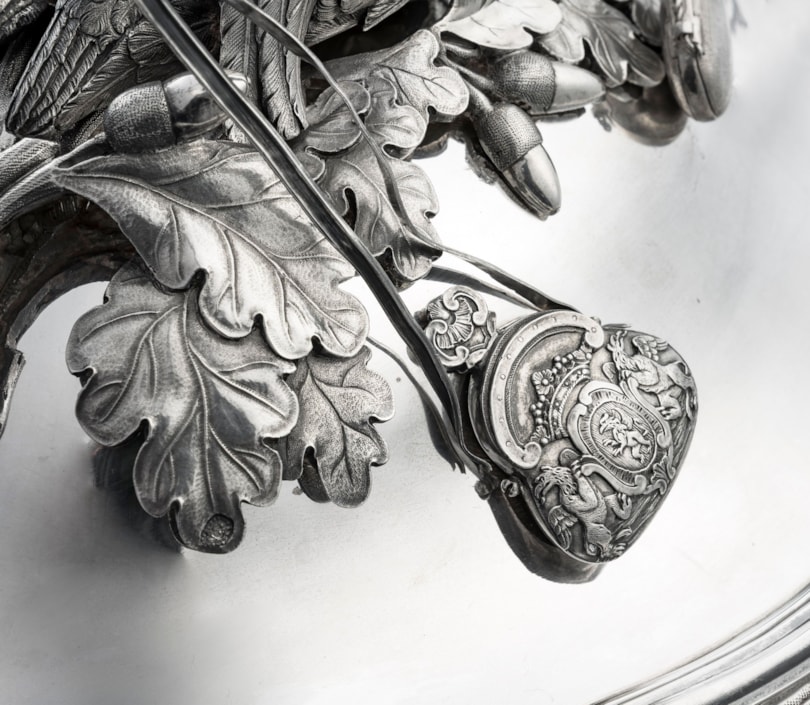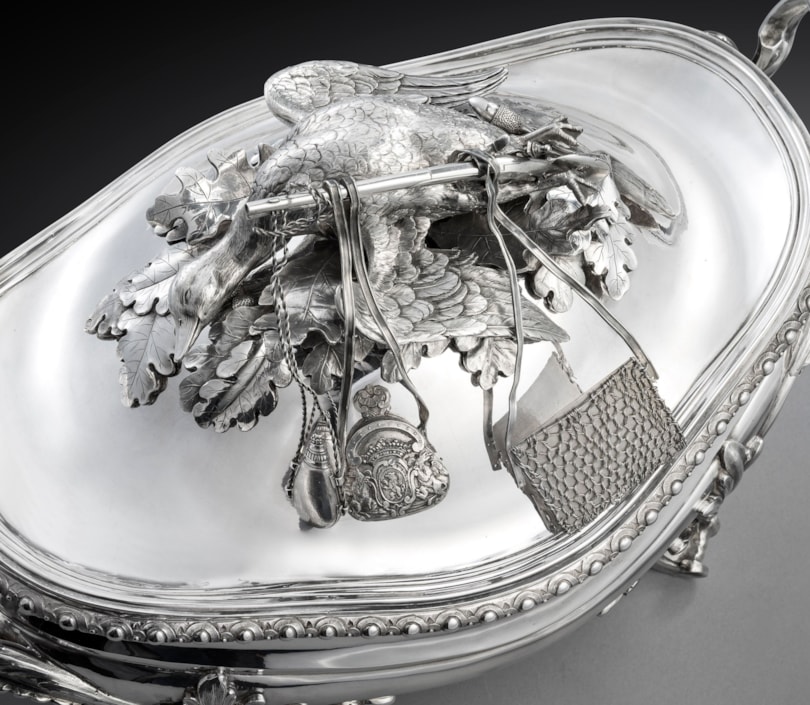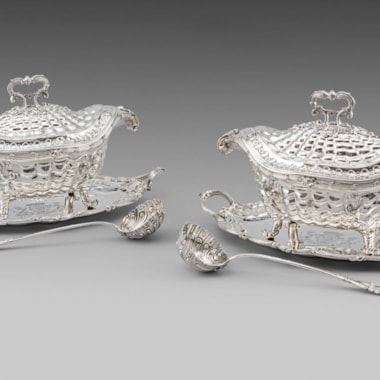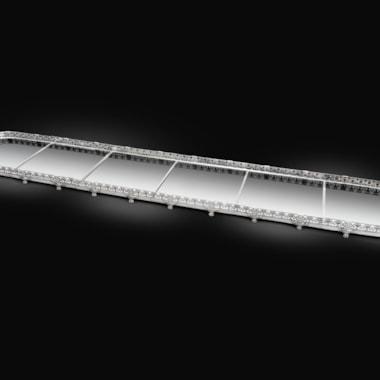Each of oval form on four cast and applied scrolling acanthus feet, the asymmetrical rocaille cast and applied handles emerging from the scroll feet on either side, and the voluptuous form of the main body finished with a chased gadrooned rim. The reeded edge covers each adorned with a finely cast and applied finial in the shape of a game bird - one with a goose, the other with a snipe – each lain upon a branch of cast oak leaves with acorns, the goose underneath a rifle, the snipe beneath a Flintlock gun. Delicately chased and ornamented bags hang from the guns of both with finely cast silver straps. The inserts each with small scroll end handles. All the individual items bear incised weight indications and numbers.
During the eighteenth century, in which these Tureens were made, Turin and Paris experienced unusually active and fruitful periods of artistic exchange and influence. In its combination of symmetry, hints of classical ornament, and easy curvilinear rhythm, these tureens exemplify the lively period of transition from the late baroque to the exuberant asymmetrical rococo that coalesced in Parisian silver and design in the 1730s under the influence of Parisian Thomas Germain (1672-1748) and Turin-born Juste-Aurèle Meissonier (1695-1750).
Given their shared professions as silversmiths and designers and their positions at the French court, Germain and Meissonier can hardly have failed to know each other, and their joint stature would have attracted Turinese designers and craftsmen to their circle – two of which were silversmiths Andrea Boucheron (1701-1761) and the sculptor Francesco Ladatte (1706-1787). Boucheron learned his craft in Paris from Thomas Germain although this fact is apparently undocumented unsurprisingly; he would not have been formally apprenticed to Germain under the rules of the Paris Goldsmiths guild, him being a foreigner. From records of payment for work for the Savoy Court, Boucheron is seen as prolific and versatile, the combination of formality and rococo ease is a consistent feature of the small body of Boucheron’s work known to exist. Although Boucheron had returned to Turin permanently in 1737, Ladette could well have become the link between Boucheron and the latest French styles.
The design of these two tureens have obvious correlations to those modelled by Thomas Germain, the most famous examples of which belong to the services ordered by King Joseph of Portugal and Empress Elizabeth of Russia. One of eight tureens from the Empress’ “Paris Service”, ordered in 1757 and completed in 1762, is now in the Thyssen-Bornemisza Collection, Lugano, and, while more highly decorated, it exhibits a comparable ease and rhythm of shape to the present pair, for which Germain was known for. With reference to Germain’s design for a soup tureen, from Eléments d’orfèvrerie, Paris, 1748, similarities can clearly be drawn not only through shape, but also in the construction of the feet and the way in which they are formed to the main body in both the printed design and the pair of tureens here presented.
This well conserved pair of tureens with original cases, first bought by Colonel Samuel von Tscharner, eventual General of the infantry in the service of Sardinia-Piemont, had remained part of the family collection by decent until recent times. By 1756, Von Tscharner had rendered outstanding services as a representative of Bernese interests by initiating the renewal of important salt supply contacts between Bern and the Kingdom of Sardinia-Piedmont. His promotion to Colonel in 1760 would have assured him a high income as a regimental owner and would have enabled him to buy this stupendous pair of tureens with hunting motifs.
You May Also Like



































































